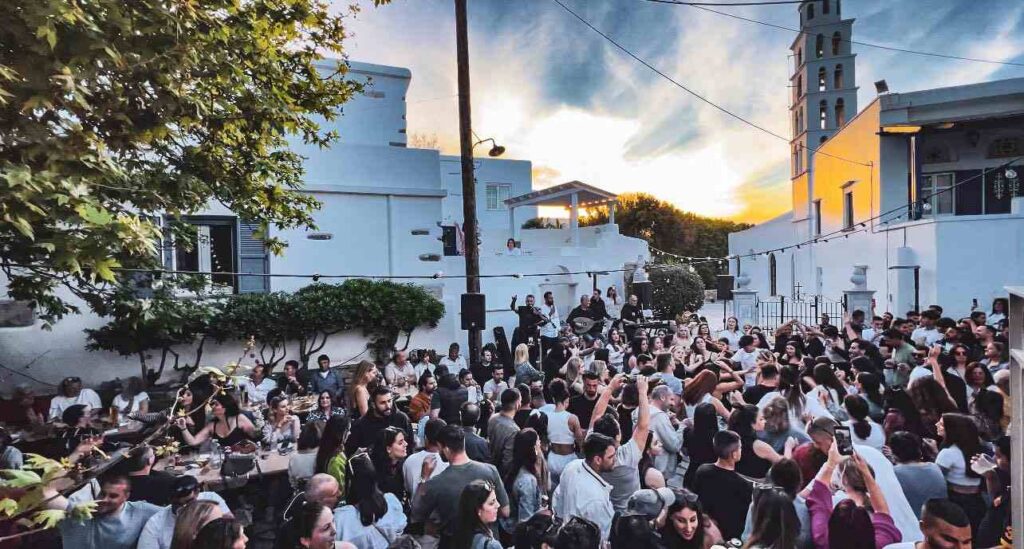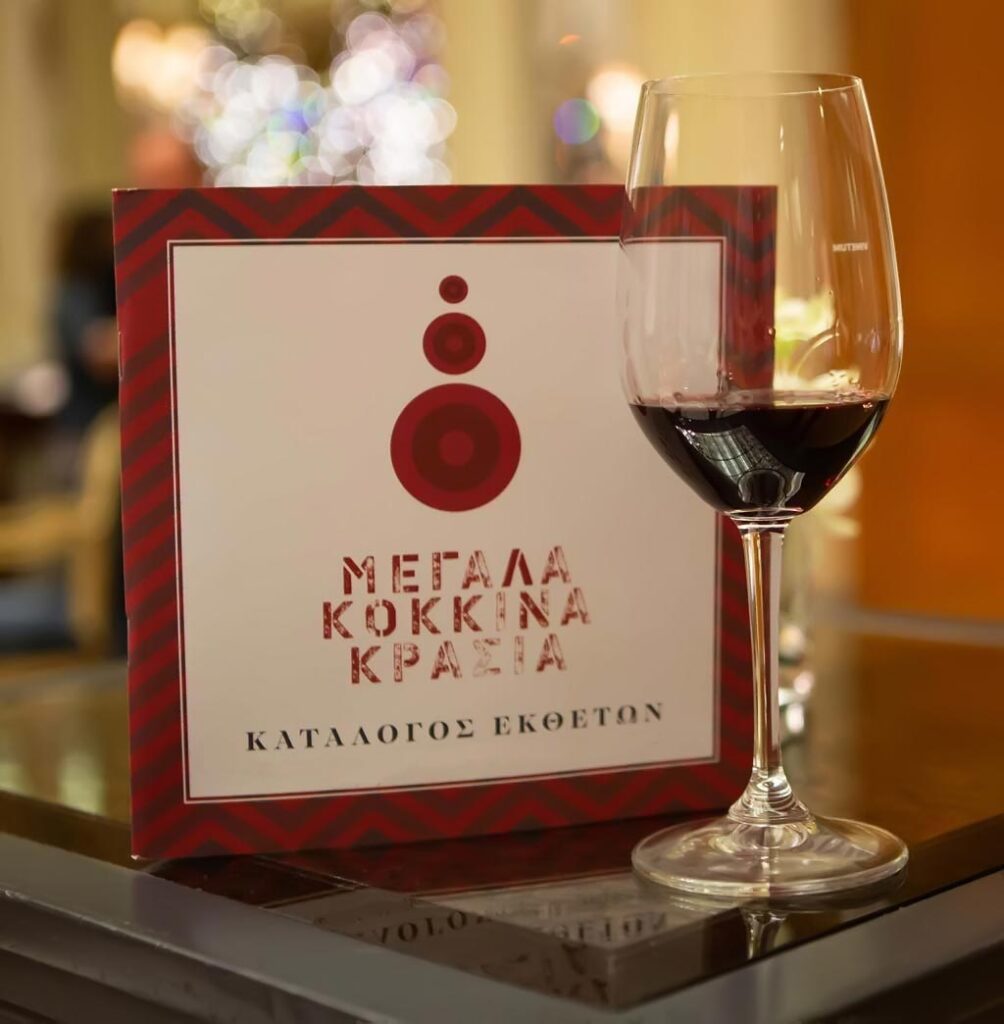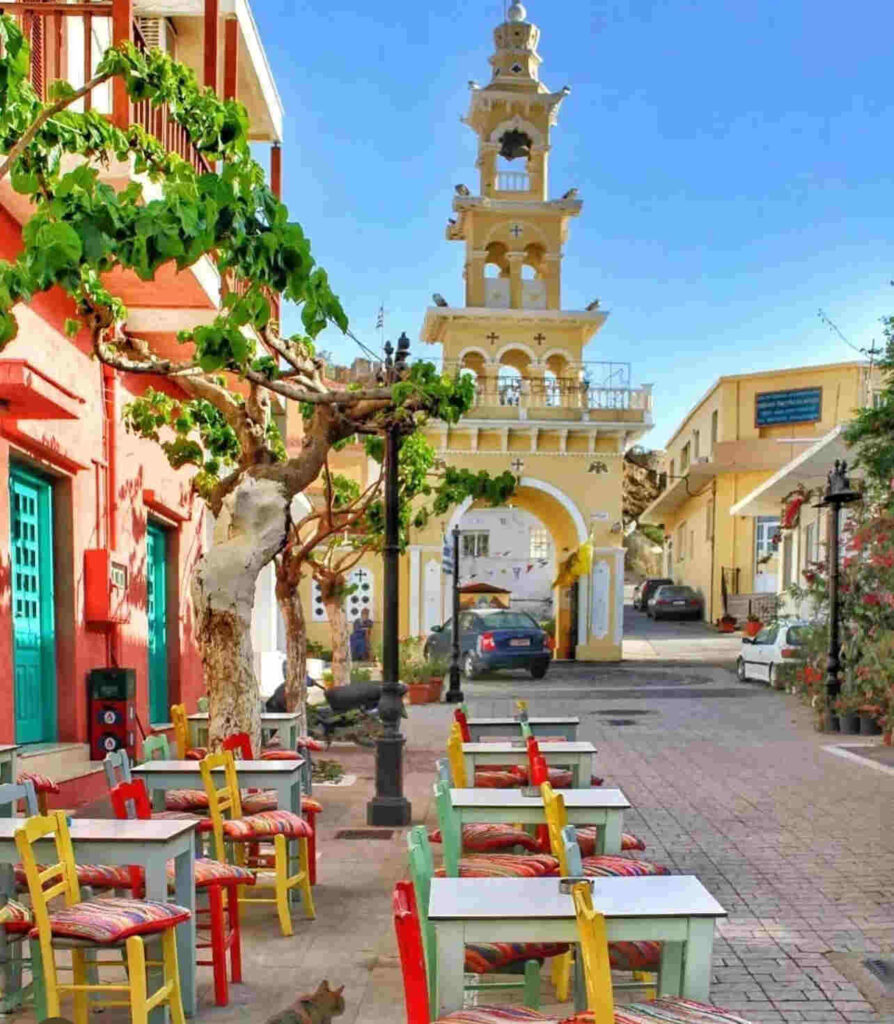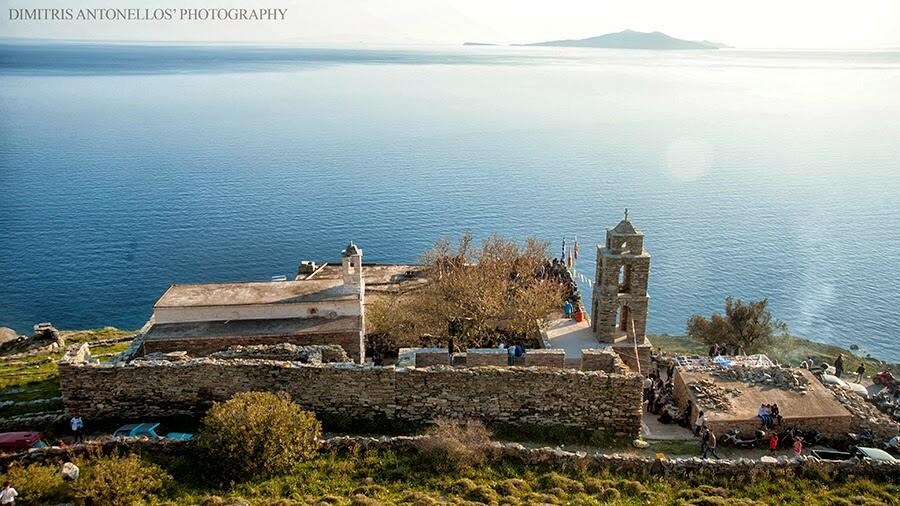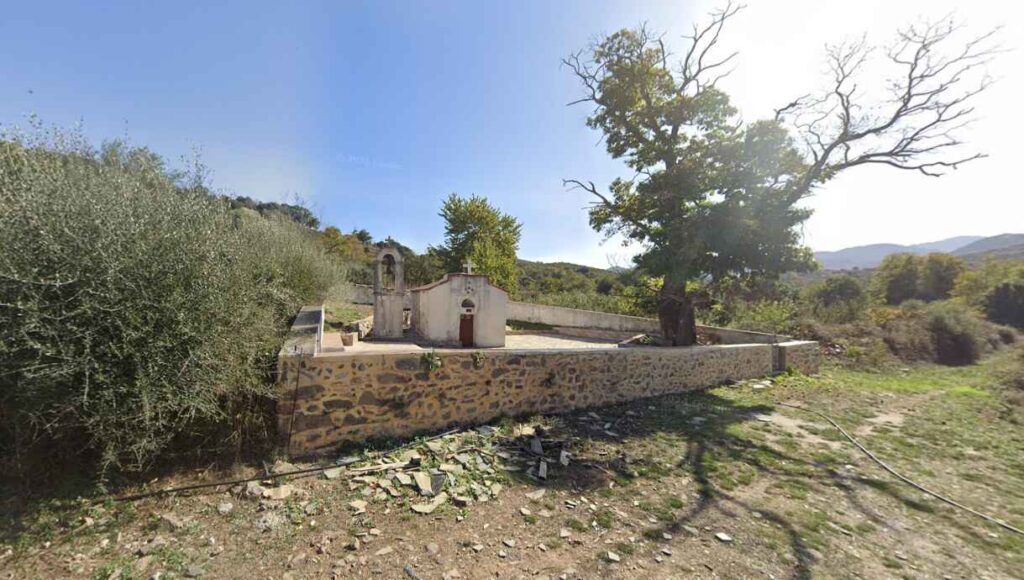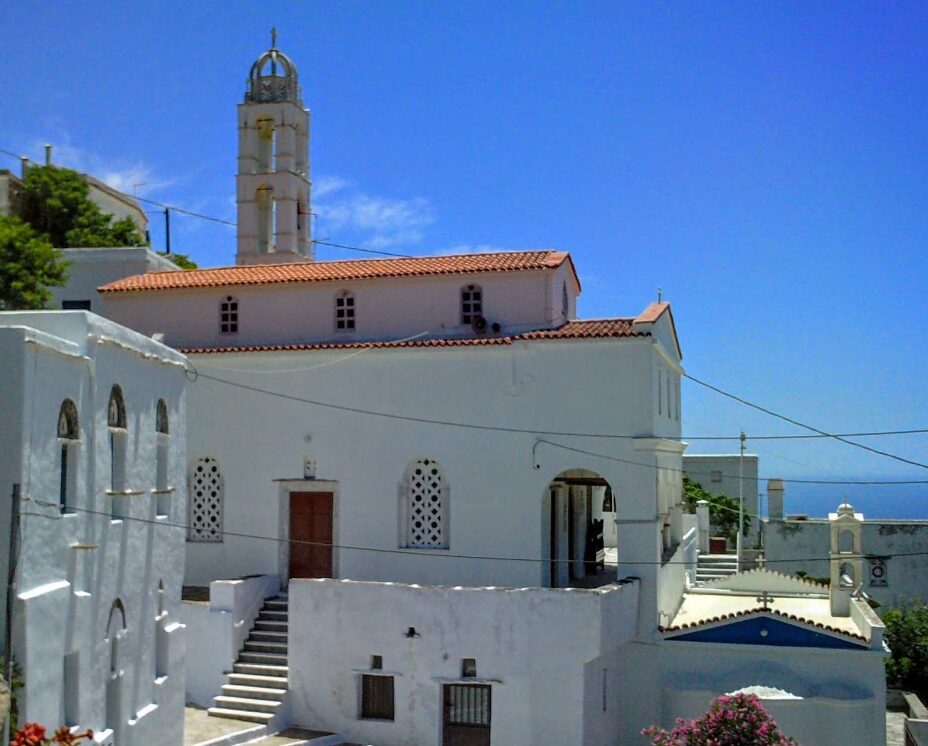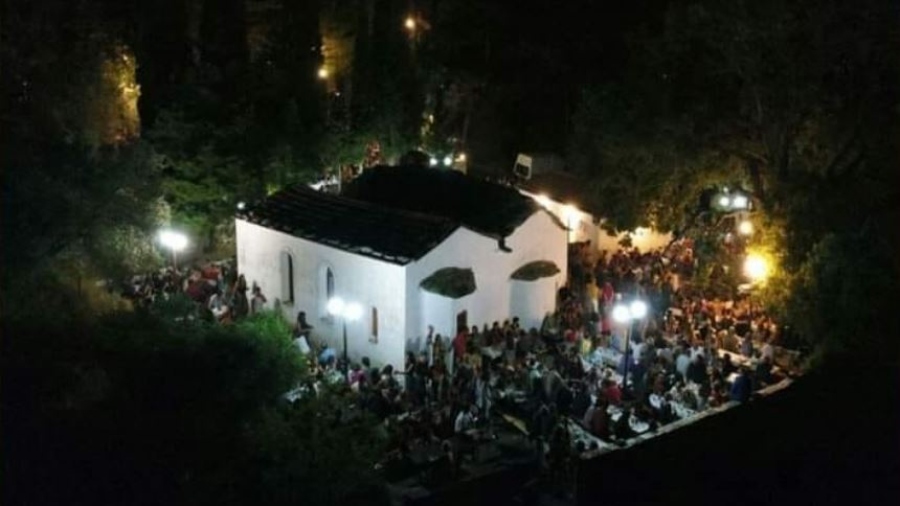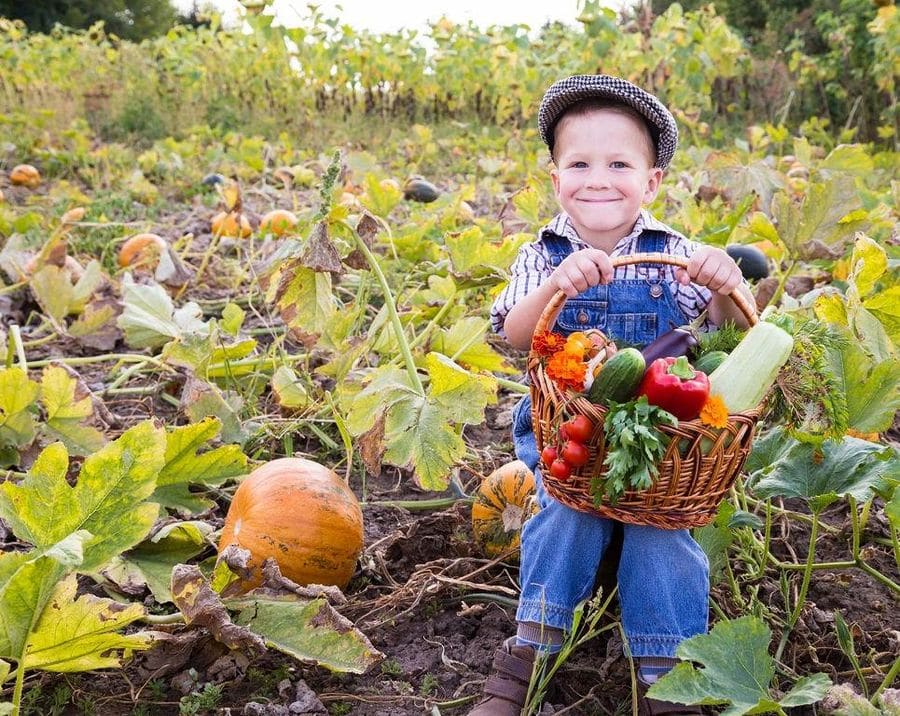Discover Steni: The Heart of Tinos Island
Built on the foothills of Mount Tsiknias, the highest mountain on Tinos, Steni is one of the island’s most vibrant and picturesque villages. It is also the largest and most populous settlement in the heart of the island — a vibrant community where Orthodox and Catholic residents have coexisted in harmony for centuries.
Two historic churches define the village’s spiritual identity: Saint Antonios (Agios Antonios), the Orthodox parish, and Saint Nicholas (Agios Nikolaos), the Catholic church. Their coexistence embodies the peaceful and inclusive spirit of Tinos.
The Historic Church of Saint Nicholas
The Church of Saint Nicholas is a landmark of faith and craftsmanship. Built in 1790, this three-aisled basilica was constructed from grey marble and designed in a Venetian architectural style, reflecting the island’s long maritime connections. Its graceful proportions and timeless beauty make it one of the most significant religious monuments on the island of Tinos.
Feast Day of Saint Nicholas in Steni – December 6
Every year on December 6, Steni celebrates its Feast of Saint Nicholas, one of the most anticipated winter festivals on the island. As the day approaches, the village comes alive with preparation and devotion.
According to tradition, the inside and outside of every church are whitewashed before the celebration, symbolising renewal and purity. Women of the village clean the church grounds, polish the candlestands, and decorate the sanctuary with flowers, transforming the space into a radiant tribute to their patron saint.
From Mass to Music: How Steni Celebrates
The day begins with a solemn Mass at Saint Nicholas Church, attended by locals and visitors from across Tinos. After the service, treats are served in the courtyard, and the celebration continues into the main square, where the atmosphere becomes festive and joyful.
Traditional Cycladic dances — especially balo and syrto — fill the square, accompanied by musicians playing violin-based folk music. Villagers celebrating their name day open their homes to guests, offering lavish spreads of local dishes, wine, and homemade raki on beautifully decorated tables with white linens and fine dinnerware. The celebration often lasts well into the night.
Traditional Tinian Dishes and Sweets
The Feast of Saint Nicholas is also a showcase of Tinian gastronomy. Among the dishes typically served are:
- Artichokes cooked in many ways
- Sun-dried tomatoes in batter
- Froutalia, the island’s signature omelette
- Savore with molasses
- Fried fish with petimezi sauce
- Pork sausages, saltsisi, and louza
Local cheeses, including the famous graviera and kopanisti, add depth to the menu. For dessert, villagers prepare amygdalota, xerotigana, karidota, pasteli, loukoumi, halva, and serve them with the island’s renowned thyme honey. Generous quantities of wine and homemade raki accompany every meal.
A Celebration of Harmony and Tradition
The Feast of Saint Nicholas in Steni, Tinos, is more than a religious event — it is a celebration of unity, hospitality, and living tradition. Here, Orthodox and Catholic communities come together to honour their shared history and the enduring bonds that define island life.
Set against the majestic backdrop of Mount Tsiknias, this festival captures the essence of Tinos: deeply spiritual, proudly traditional, and warmly welcoming — a true expression of Greek island life in its purest form.
Indicative Time Program for the Feast of Saint Nicholas
December 5 – Eve of the Feast
- 18:00 – Vespers service (Esperinos) at the Church of Saint Nicholas
- 19:30 – Lighting of candles and blessing of bread (Artoklasia)
- 20:00 – Informal gathering in the church courtyard with local sweets and raki
December 6 – Feast Day
- 07:30 – Morning bells ring across Steni
- 08:00 – Divine Mass (Holy Liturgy) at Saint Nicholas Church
- 10:00 – Distribution of traditional treats and coffee in the courtyard
- 11:30 – Procession through the village with the icon of Saint Nicholas
- 12:30 – Festival lunch: villagers open their homes and share traditional dishes and wine
- 15:00 – Live music and dancing (balo and syrto) in the main square
- 18:00 – Evening gatherings continue in local cafés and taverns
- 21:00 – End of the official program, but celebrations often last late into the night
(Times are indicative and may vary slightly each year depending on the parish schedule.)

